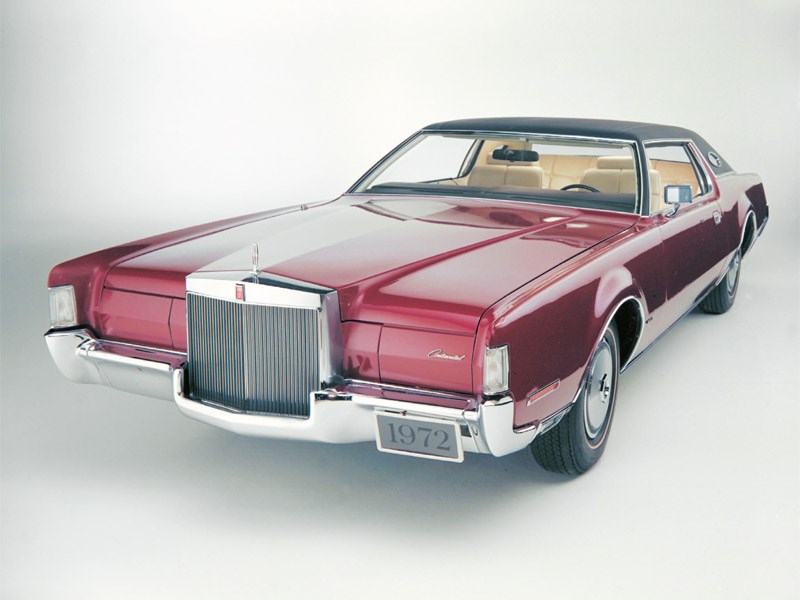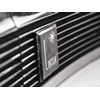Lincoln Continental 1968-80: Buyers Guide
 1968-80 Lincoln Continental
1968-80 Lincoln Continental

 1968-80 Lincoln Continental
1968-80 Lincoln Continental


|
|
1968-80 Lincoln Continental
|

|
|
1968-80 Lincoln Continental
|
Lincoln’s epitome of 1970s excess was an unexpected sales success

|
|
Buyer's Guide: 1968-80 Lincoln Continental
|
1968-80 Lincoln Continental
WHAT IS IT?
The first Lincoln Continental was launched in 1939 and was based on a coupe produced for the personal use of Edsel Ford, hence the later use of ‘Personal Car’ to describe huge, luxury ’60s coupes. The Continental name was revived in 1955 with the release of the Mark II before being used across the Lincoln range from 1961.
In 1968, Lincoln’s personal car was the Thunderbird-based Continental Mark III, the design of which was overseen by Lee Iacocca, and featured a ‘Rolls-Roycestyle’ grille, spare wheel boot bulge and concealed headlights.
Despite measuring 5.5 metres long, interior space was at a premium unless you were sitting on the wide, split bench. The interior was opulent – in that ’60s US style – with veneer trim and velour seat coverings. Air-con was optional but most ticked the box and 84 percent of 1969 cars had vinyl roofs.
The Mark IV, released in 1972, had the angular styling which would define the brand for a decade. It was 100mm longer, 76mm of that going into the wheelbase to increase cabin space, and large C-pillars featured oval ‘opera windows’.
Engines were lazy 6.6- or 7.5-litre carburettor-fed V8s, the 7.5 making just 154kW (but 484Nm) after US regulations stopped car makers from quoting gross power figures. Seemingly unaffected by fuel shortages and an extra 70kg of impact-absorbing bumpers, sales peaked at almost 70,000 in 1973.
The Mark V was launched in 1977 and differed little from previous models although 127kg was shaved to drop kerb weight to 2115kg! The 400ci (6.6-litre) V8 remained the base unit and the 460ci (7.5) was optional until 1979. The gearbox was Ford’s C6 ‘Command Shift’. In an attempt to reduce fuel consumption, the final-drive ratio was raised, which killed performance even more. Still, a Mark III could do 0-97km/h in under nine seconds.
Four ‘Designer’ editions – like the silver/grey Cartier and cream/metallic blue Bill Blass models – were launched in 1976 carrying a huge price premium and featured gold-plated dash plaques that could be engraved with the owner’s name. In 1979, Mark V sales topped 75,000.
HOW'S IT DRIVE?
If you’re considering a RHD-converted car, take care – cars converted in the 1970s were subject to minimal regulation. A car in good condition with its underpinnings aligned and working well will have a pneumatic rather than jiggly ride. Brakes are the weak point and shifting down on long descents is a good idea. By today’s standards the interior isn’t luxurious – leather trim was optional – but later models had six-way electric seats, power sunroofs and automatic headlights.
CHECKLIST
Check closely for body and structural rust. Understressed V8s need only basic maintenance and the C6 auto is very durable but be wary of jerky upshifts and slow engagement of reverse. Excessive bouncing over minor bumps and irregular tyre wear might indicate worn suspension or a dodgy conversion. Check that all cabin electrical systems are ‘go’ and that the air-conditioning at least blows cool.
SPECIFICATIONS
1968 - 1980 Lincoln Continental
Body: 2-door hardtop coupe
Engine: 6590cc or 7539cc V8s, OHV, 16v, two-barrel carburettor
Power: 154kW @ 3800rpm*
Torque: 484Nm @ 2600rpm*
Weight: 2359kg*
Gearbox: 3-speed automatic
Brakes: power disc/drum (f/r)
Price Range: $4500-27,000
* 1973 Town Coupe
Unique Cars magazine Value Guides
Sell your car for free right here
Get your monthly fix of news, reviews and stories on the greatest cars and minds in the automotive world.
Subscribe

.jpg)












